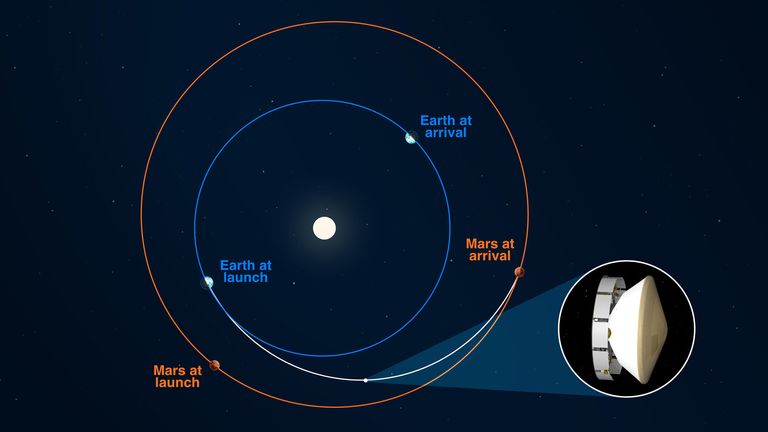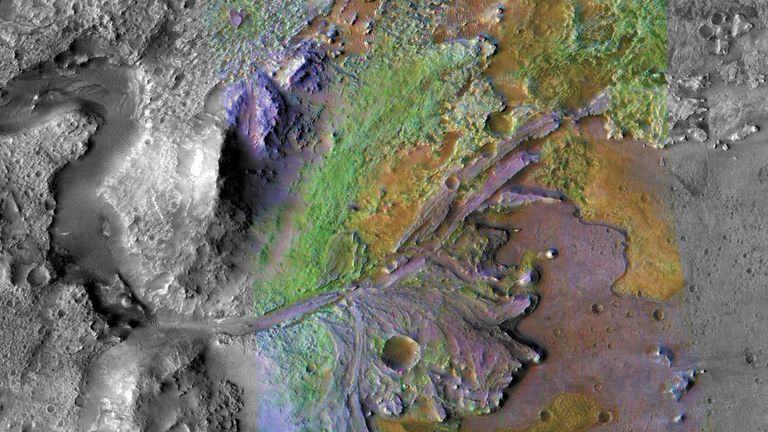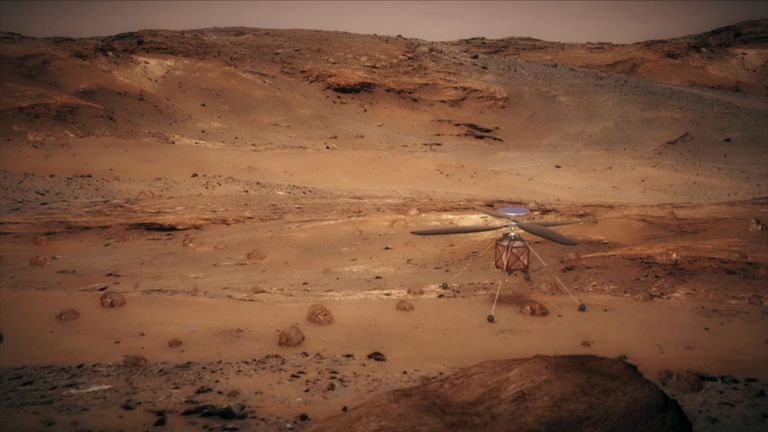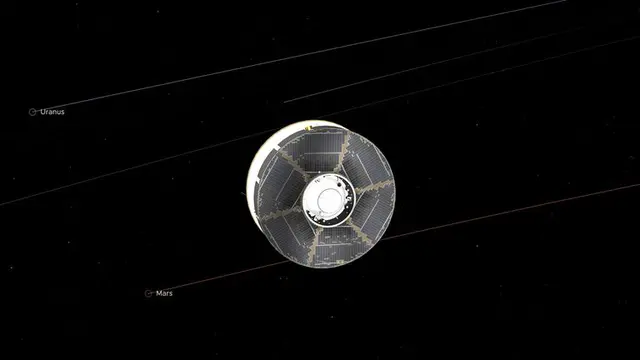NASA's Perseverance rover is now halfway to Mars - having flown 146 million miles (235 million km).
Although the spacecraft has travelled half the distance it needs to cover to land on Mars, it isn't perfectly between the Earth and Mars as the journey between two planets doesn't take a straight line.
Instead, the rover is approximately 26.6 million miles (42.7 million km) ahead of the Earth, and about 17.9 million miles (28.8 million km) away from Mars.

Image:The spacecraft is approaching Mars and will arrive in February. Pic: NASA
Perseverance is scheduled to break into the Martian atmosphere at 11,900mph (19,000kph) on 18 February next year.
At the moment it takes two minutes and 22 seconds for transmissions from Earth to reach the spacecraft, but by the time it reaches Mars those same transmissions will take 11.5 minutes.
This is less than the time there is between Perseverance entering the Martian atmosphere and landing.
By the time mission control sees what is happening, the rover will have either already landed or been destroyed - as most attempts to land on Mars have ended.
NASA hopes its new guidance and parachute-triggering technology will help steer the rover away from these hazards, but its controllers back on Earth will be helpless.
After travelling more than 290 million miles (470 million km) the rover, which has a mass of 1,050kg (2,313lbs), could simply add to the craters on the planet's red surface.
But if all goes to plan then Perseverance will touch down in an ancient river delta and former lake on the Martian surface known as the Jezero Crater.

Image:NASA has announced the rover will land in the Jezero crater. Pic: NASA
The Jezero Crater is full of obstacles and dangers to the rover, including boulders, cliffs, sand dunes and depressions, which could end the mission, both in landing and as the rover drives along the surface.
The deposits in the crater are rich in clay minerals, which form in the presence of water, meaning life may have once existed there - and such sediments on Earth have been known to store microscopic fossils.
Scientists have also noted that the crater doesn't have a depth which matches its diameter, which means sediment likely entered the crater through flowing water - potentially up to a kilometre of it - all of which will offer rich pickings for signs of ancient life.
NASA says that verifying ancient life on Mars carries an enormous burden of proof.
While the remnants of microbial life on Mars could have left telltale marks in the sediment layers which Perseverance will drill down into, it might be difficult to analyse them on the planet itself.
After drilling into the best rocks, the rover will cache about half a kilogram of rock sample in dozens of titanium tubes that will be collected by another rover in approximately a decade's time.
NASA and the European Space Agency are planning a Mars sample return campaign, during which these samples can be examined with instruments that are far too large and complex to send to Mars.

Image:A miniature helicopter is also being sent to Mars
Perseverance is also equipped with
a miniature helicopter
named Ingenuity which weighs just 4lbs (1.8kg) and will be the first rotorcraft to fly on another planet.
"The laws of physics may say it's near impossible to fly on Mars, but actually flying a heavier-than-air vehicle on the red planet is much harder than that," the space agency quipped.
 简体中文
简体中文



